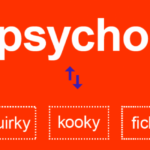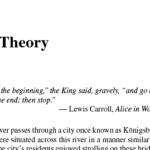Where To Start With Jung
1. Familiarize yourself with Carl Jung’s life and background, including his education and influential mentors.
2. Start by reading Jung’s autobiography, “Memories, Dreams, Reflections,” to gain insight into his personal experiences and development of his theories.
3. Explore the distinction between Carl Jung and Sigmund Freud, including their similarities and differences in theories and approaches to psychology.
4. Engage with key concepts introduced by Jung, such as the collective unconscious, archetypes, and the process of individuation.
5. Read “Psychological Types,” where Jung outlines his theory of personality and introduces the concept of psychological functions.
6. Understand the concept of the shadow, which represents the unconscious and repressed aspects of an individual’s personality.
7. Delve into the topic of dreams and symbolism by studying Jung’s “Man and His Symbols” or “Dreams: Memories, Reflections.”
8. Analyze the importance of myths, fairy tales, and religious symbols in Jung’s work by reading “The Archetypes and the Collective Unconscious.”
9. Learn about the concept of anima and animus, the male and female aspects of the psyche, in “The Syzygy: Anima & Animus.”
10. Explore the topic of synchronicity, which refers to meaningful coincidences, in “Synchronicity: An Acausal Connecting Principle.”
11. Study Jung’s views on the process of psychotherapy and the integration of the ego with the unconscious mind in “The Psychology of the Transference.”
12. Learn about Jung’s views on religion and spirituality in “Psychology and Religion: West and East.”
13. Read “The Red Book,” Jung’s personal journal containing his explorations into the depths of the human psyche, including his encounters with archetypal figures.
14. Familiarize yourself with the influence of alchemy on Jung’s theories by reading “Jung and the Alchemical Imagination” by Jeffrey Raff.
15. Examine the role of symbols and symbolism in “The Symbolic Life: Miscellaneous Writings.”
16. Study Jung’s interpretation of the process of psychological development in “The Development of Personality.”
17. Gain insight into the significance of the mother archetype in Jung’s work through “The Archetypal Mother.”
18. Explore the concept of the hero’s journey and its relation to mythology and individuation in “The Archetypal Hero.”
19. Understand the concept of the persona, the social mask individuals wear in society, in “Two Essays on Analytical Psychology.”
20. Study Jung’s perspective on art and creativity in “Modern Man in Search of a Soul.”
21. Delve into the concept of the anima/animus in relationships and its impact on love and sexuality in “The Relations between the Ego and the Unconscious.”
22. Learn about Jung’s ideas on the process of becoming whole and integrating one’s unconscious in “Aion: Researches into the Phenomenology of the Self.”
23. Dive into the topic of introversion and extraversion and their effects on personality in “Psychological Types.”
24. Explore the concept of the self, the central archetype that represents the totality of an individual’s psyche, in “The Archetypes and the Collective Unconscious.”
25. Study Jung’s concept of the shadow self in relation to evil and how it manifests in individuals and societies in “Answer to Job.”
26. Read “Jung on Synchronicity and the Paranormal” for further exploration of Jung’s views on synchronicity and its connection to the supernatural.
27. Gain a deeper understanding of Jung’s ideas on the collective unconscious and its relation to the individual’s psyche in “The Structure and Dynamics of the Psyche.”
28. Study Jung’s thoughts on the process of psychological transformation and the importance of embracing one’s shadow in “Transformation Symbolism in the Mass.”
29. Explore the role of the unconscious in dreams and the process of dream analysis in “The Practice of Psychotherapy.”
30. Further reflect on Jung’s overall contributions to psychology and his impact on the field by reading critical analyses and biographies of his work.
More About Where To Start With Jung
Welcome to the fascinating world of psychology and mythologies! If you are new to the works of Carl Jung, you are about to embark on a remarkable journey of self-discovery, symbolism, and the exploration of the unconscious mind.
Swiss psychiatrist Carl Gustav Jung is widely regarded as one of the most influential figures in the field of psychology. Born in 1875, Jung developed a unique perspective on the human psyche that revolutionized our understanding of the mind and its hidden depths. His theories and concepts have had a profound impact not only within the realm of psychology but also in fields like literature, art, and spirituality.
So, where do you begin with Jung? Whether you are a psychology enthusiast, a student, or simply someone seeking to understand yourself and the world around you, starting with the basic concepts is essential for delving deeper into his work.
At the core of Jung’s psychology is the idea of the collective unconscious. Unlike the personal unconscious, which contains an individual’s repressed thoughts and memories, the collective unconscious represents a shared inherited reservoir of symbols and archetypes that are common across cultures and time. These archetypes, such as the Wise Old Man, the Hero, or the Shadow, shape our thoughts, behaviors, and dreams.
To begin your journey into Jungian psychology, it is important to familiarize yourself with the concept of archetypes. They are the building blocks of the collective unconscious and can be found in everything from myths and legends to dreams and religious imagery. Exploring these archetypes can help you gain insight into the underlying patterns and motivations that influence your thoughts and actions. A great starting point would be Jung’s book, “Man and His Symbols,” a collaborative work that provides an accessible introduction to his ideas.
Another fundamental concept in Jung’s work is individuation. Individuation refers to the process of becoming a complete and integrated individual by exploring and integrating the unconscious aspects of our psyche. It involves acknowledging and embracing the shadow the dark and repressed aspects of ourselves and integrating them into our conscious awareness.
To understand the process of individuation more deeply, Jung’s autobiography, “Memories, Dreams, Reflections,” offers a personal account of his own journey through self-discovery. The book provides valuable insights into the development of his theories and his encounters with dreams, visions, and inner conflicts.
Dream analysis is another significant aspect of Jungian psychology. Dreams, according to Jung, provide a glimpse into the unconscious and offer valuable messages and symbols that can help us understand ourselves better. Jung emphasized the therapeutic potential of dream analysis, suggesting that by decoding the symbols within our dreams, we can gain insights into our unconscious desires, fears, and unresolved conflicts. His book, “The Portable Jung,” offers an assortment of his writings, including those on dream analysis, making it an excellent resource for exploring this topic further.
Jung’s theories extend beyond the individual psyche, connecting deeply with spirituality and religion. He explored the psychological significance of religious myths and rituals, emphasizing their essential role in human development and as a path towards the integration of the individual and the collective unconscious. “Psychology and Religion: West and East” is a seminal work exploring this aspect of his thinking, delving into the transformative potential of religious experiences and their psychological implications.
As you embark on your journey into the world of Carl Jung, be prepared to challenge your preconceptions and embrace the depths of your own mind. Remember, understanding Jung’s theories is not about blindly accepting his ideas, but rather about using them as tools to explore and understand yourself and the world around you more fully.
So, delve into the works of Jung, question, reflect, and allow his ideas to inspire your own exploration of the mysteries of the human psyche. May this journey of self-discovery bring you insight, wisdom, and personal growth.
Where To Start With Jung FAQs:
1. Q: Who is Carl Jung and what is his contribution to psychology?
A: Carl Jung was a Swiss psychiatrist and psychologist who developed analytical psychology. His contributions include the concept of the collective unconscious, archetypes, and the exploration of the human psyche.
2. Q: Where should I begin if I want to learn more about Jung’s theories?
A: A great starting point is Jung’s autobiography, “Memories, Dreams, Reflections.” It offers insights into his personal experiences and influences that shaped his psychological theories.
3. Q: What is the collective unconscious, and why is it significant?
A: The collective unconscious refers to the shared, innate knowledge and experiences inherited from our ancestors. It plays a crucial role in forming universal symbols and archetypes found across cultures, providing insights into the human psyche.
4. Q: Are archetypes important in Jung’s theories?
A: Yes, archetypes are essential in Jungian psychology. They are universal symbols or patterns of behavior that exist within the collective unconscious and help us understand and interpret our experiences and emotions.
5. Q: How can I apply Jung’s theories in my everyday life?
A: Jungian psychology suggests that self-awareness and integrating our unconscious aspects can lead to personal growth. Paying attention to dreams, exploring our own archetypal patterns, and understanding our individual journey toward “individuation” are practical applications.
6. Q: What are some key differences between Freud and Jung’s theories?
A: While both Freud and Jung focused on the understanding of the unconscious, they diverged in their views. Freud emphasized the role of individual experiences and sexual impulses, while Jung believed in a broader collective unconscious and the significance of spirituality and mythology.
7. Q: How can I better understand Jung’s concept of “shadow”?
A: The shadow, according to Jung, represents the hidden and repressed aspects of our personality, which we tend to ignore or reject. By acknowledging and integrating our shadow, we can achieve wholeness and self-acceptance.
8. Q: What is the process of “individuation” in Jungian psychology?
A: Individuation refers to the process of self-realization and maturation, where an individual aims to integrate their conscious and unconscious aspects to achieve a sense of completeness and fulfillment.
9. Q: Can Jungian psychology be used effectively in therapy?
A: Yes, Jungian therapy or analytical therapy is employed by trained professionals to help individuals explore their unconscious, dreams, symbols, and archetypal patterns. It aims to facilitate personal growth, self-discovery, and healing.
10. Q: Are there any contemporary psychologists who draw inspiration from Jung’s work?
A: Yes, various contemporary psychologists and therapists integrate Jung’s concepts into their practice. Some notable examples include James Hillman, Marion Woodman, and Clarissa Pinkola Estés, who have expanded Jung’s ideas in fields such as mythology, storytelling, and gender studies.





















